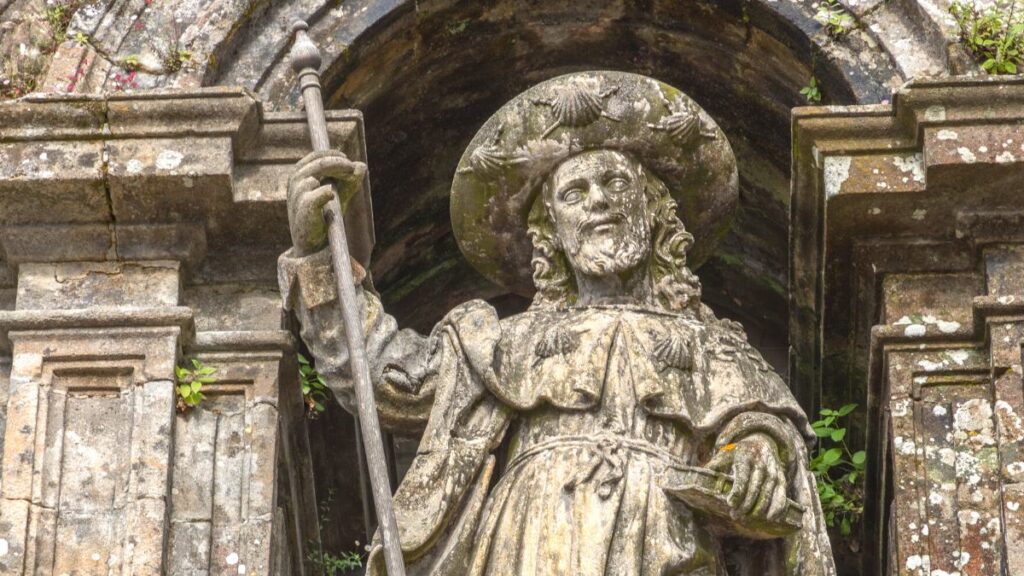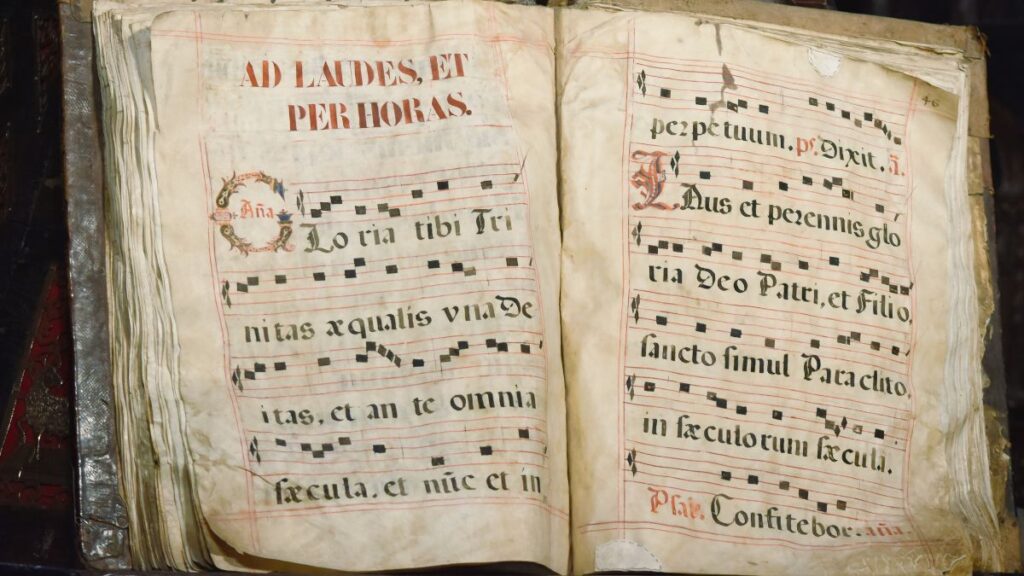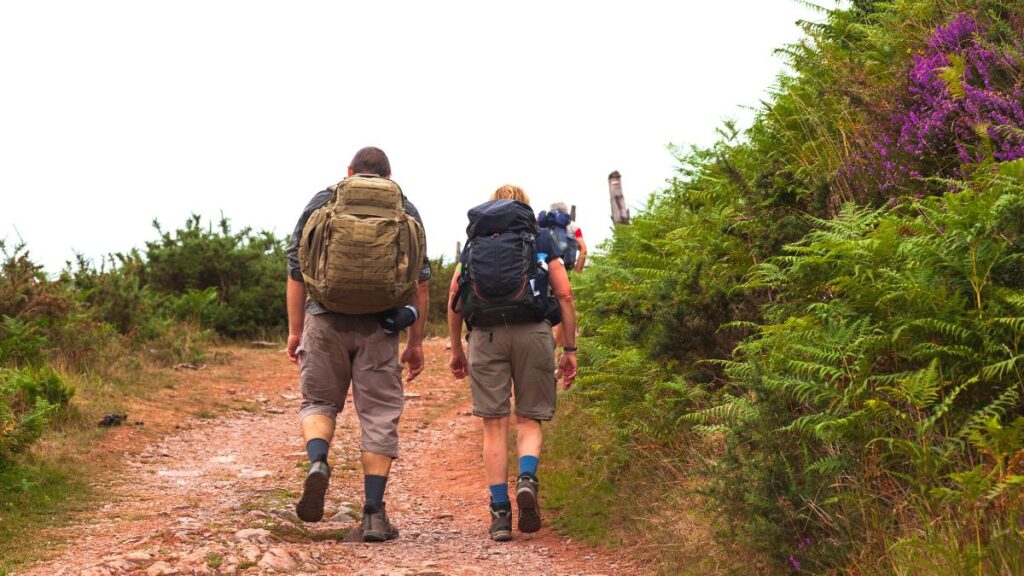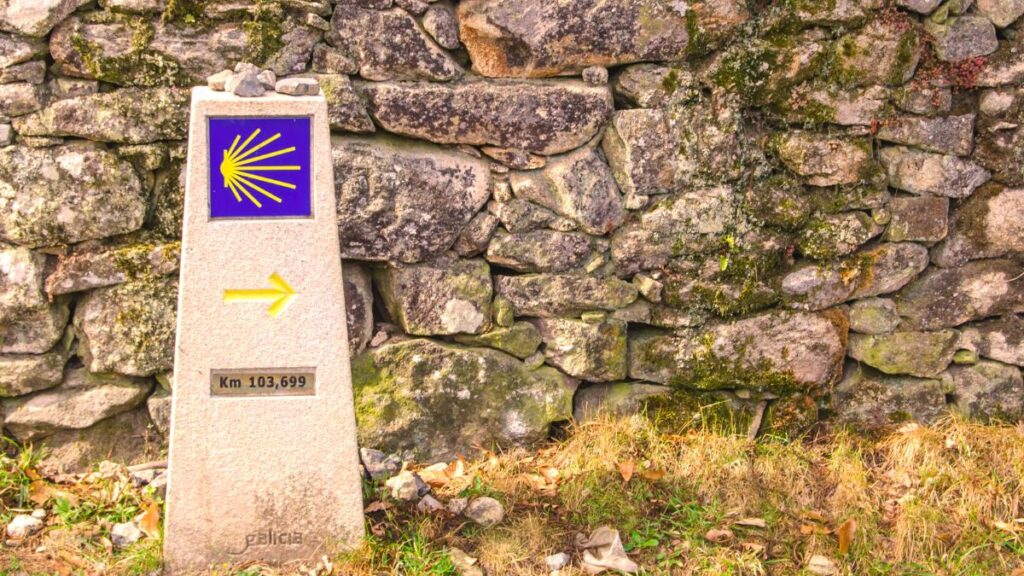What is “Ultreia et Suseia” on the Camino de Santiago?
When I walked my first Camino de Santiago pilgrimage in 2019, I saw the phrase “Ultreia et Suseia” etched onto some gorgeous silver rings in Galicia. I also heard it exchanged among pilgrims, especially in popular Facebook groups and forums.
Without a doubt, this phrase has a significant meaning when it comes to the Camino.
So, I set off to learn about the meaning of “Ultreia et Suseia.”
In this article, we will explore the meaning, origin, history, significance, and importance of “Ultreia et Suseia” as well as its relevance to modern-day pilgrims.
Literal Meaning of “Ultreia et Suseia”

Let’s start with the literal meaning of Ultreia et Suseia. Both terms are derived from Latin and convey the following meanings.
According to my research, the term “Ultreia” means “Beyond.” This is similar to saying, “Let’s go higher” or “Keep going.”
“Et Suseia” translates to “Higher.”
Some experts even suggest that “Ultreia” may have been used to mean “Alleluia.”
All that being said, Ultreia et Suseia is akin to saying, “Onwards and Beyond!”
While the original form was written in Latin, the Spanish spelling is often seen as “Ultreya et Suseya” (or, less frequently “Ultrella et Susella.”).
No matter the literal translation or spelling, this deeply rooted expression carries a sense of determination and motivation to continue on with the pilgrimage.
Symbolic Meaning of “Ultreia et Suseia”
Now that we’ve reviewed the literal translation of Ultreia et Suseia, what’s the significance behind it?
Well, Ultreia et Suseia on the St. James Way has a deep symbolic meaning. I’ll try to boil it down for you the best I can.
Firstly, many historians believe that this meaningful expression originated as an ancient pilgrims’ greeting. Creating a sense of unity and shared purpose, Ultreia et Suseia was a medieval phrase of encouragement. It’s a reminder to go beyond one’s physical and spiritual limitations, to persevere, to overcome challenges, and to embrace the transformative power of the Camino de Santiago. 💙
And, get this, the saying may have also served as a way for pilgrims to express their wish to meet again—either at the Cathedral in Santiago or in heaven. (Honestly, reading this really takes the meaning of Buen Camino to a whole other level as well.)

It’s also not lost on us the power of the collective bond between pilgrims. Although the pilgrimage is an individual thing (even if you’re walking with a friend or family member, you still face your own challenges), there’s something incredibly special about the encouragement you give and receive along the Camino.
I know I wouldn’t have made it to Santiago without the camaraderie and encouraging words!
All in all, “‘Ultreia et Suseia’ embodies the spirit of the Camino de Santiago—embracing the spiritual journey, pushing past limitations, and a powerful collective experience.
What do you think, will you start saying, “Ultreia!”?
“[Ultreia et Suseia] urges pilgrims to overcome their physical and mental obstacles, to push beyond their limits, and to strive for spiritual growth. It is a call to keep moving forward, to seek higher levels of consciousness, and to embrace the transformative power of the pilgrimage.” ~Maria Pilar Rivero, Historian
Origin and History of “Ultreia et Suseia”

Have you heard the saying, “History is the key that unlocks the mysteries of the present”? This metaphor got me thinking. Perhaps we can’t fully comprehend the meaning of Ultreia et Suseia without understanding where it came from.
So let’s take a dive into the origin of the expression, “Ultreia et Suseia.”
Dating back to the medieval period, “Ultreia et Suseia” appeared in the Calixtine Code (Codex Calixtinus). This manuscript is sort of the first guidebook for pilgrims! Through the document, historians gain insights into the customs, prayers, and traditions of the Jacobean pilgrimage.
A notable reference to “Ultreia et Suseia” is found in a song called Dum Pater Familias. The full lyrics were, “Ultre ia Et Sus eia. Deus adjuva nos!” This translates roughly to “Let us go further and higher. God help us!”
Here’s an excerpt I found (Note: translations seem to vary):
Dum Pater Familias
God, Father of all mankind, King, ruler of the world
Gave to his apostles dear,
lands, each to their own just care
James in his own land of Spain,
Shines out with a holy flame
First [to be martyred] amongst Apostles now!
Martyred at Jerusalem!
James became the holiest
by illustrious martyrdom!
Lo! James’s Galicia calls out for our pious toil,
Marching on the holy way, road over her glorious soil.
Likewise, our prayers grow into melodious song
To Lord St. James! To God’s St. James!
And onward! And upward! God speed our way!
I also found this gorgeous choral version of Dum Pater Familias. This hymn gave me chills, and I highly recommend you give it a listen, ⤵
Experts believe pilgrims sang this song as they journeyed towards Santiago. As you can imagine, like many other songs, it would have been a form of encouragement and motivation.
Over time, the expression has been shortened and turned into more of a saying, with some scholars citing the use of, “Ultreia, Suseia, Santiago” meaning “Beyond and Higher, Onto Santiago.”
Regardless of how Ultreia began or how it’s going, the meaning isn’t any less significant for people on the pilgrimage in recent years.
How is “Ultreya et Suseya” Used on the Camino?
Since “Ultreia et Suseia” connects modern-day pilgrims to the rich heritage and traditions of the Camino, it’s still in use today—although significantly less.

There are a few common ways that you’ll see Ulreta et Suseya (again, a commonly accepted Spanish spelling) used on the Camino.
First, it’s sometimes used as a saying between pilgrims. (Today, the use of the greeting “Buen Camino” is much more common.) It’s important to note that Ultreia is a technically a greeting and a response. So, one pilgrim would should “Ultreya” and others would respond with, “et Suseia.” However, just the cry of “Ultreia” is heard from time to time.
In Spain, you’ll see the expression printed on signs, graffitied on walls, and on Camino memorabilia. It’s also not unheard of to get an Ultreia tattoo in Santiago de Compostela!
Many pilgrims in active Facebook groups and online forums share the sentiments, too.

FREE DOWNLOAD
Camino de Santiago Phone wallpaper
How to Pronouce “Ultreya et Suseya”
In Spanish, Ultreya et Suseya (ulˈtɾeʝa ˈet suˈseʝa) is pronounced as: ool-TRAY-yah-eht-soo-SEY-yah.
It’s important to note that pronunciation can vary slightly depending on regional accents and influences. However, the above pronunciation should be generally understandable to anyone familiar with the phrase!
The Cultural Importance of “Ultreia et Suseia” Today
Today, “Ultreia et Suseia” continues as a way for us to lift each other up and express a desire to meet again—either at the Cathedral in Santiago or in Heaven. It’s a meaningful symbol of the shared pilgrimage experience and the camaraderie that exists among individuals from diverse backgrounds and cultures.

It’s also a testament to the tradition that connects us to the pilgrims of the past.
Or it does if we carry the tradition forward ourselves by shouting, “Ultreia!” to our fellow pilgrims.
Regardless of the greeting used, Ultreia et Suseia or Buen Camino, it has become ingrained in the pilgrimage experience. I hope you come to cherish it as much as I do.
Ultreya!

